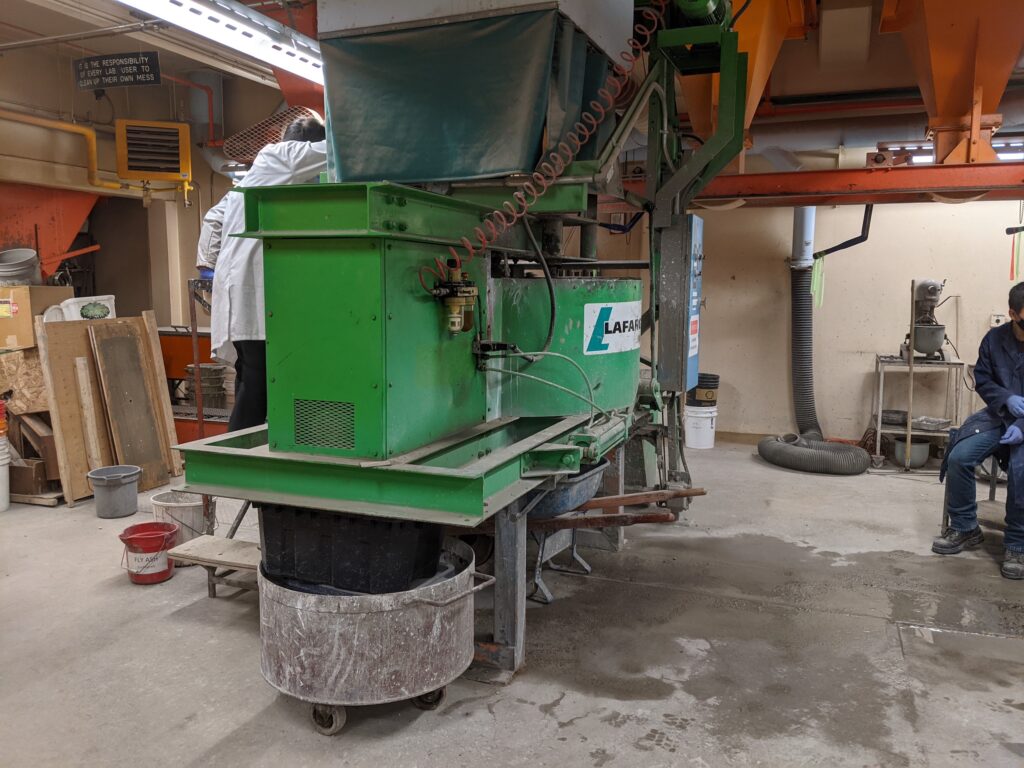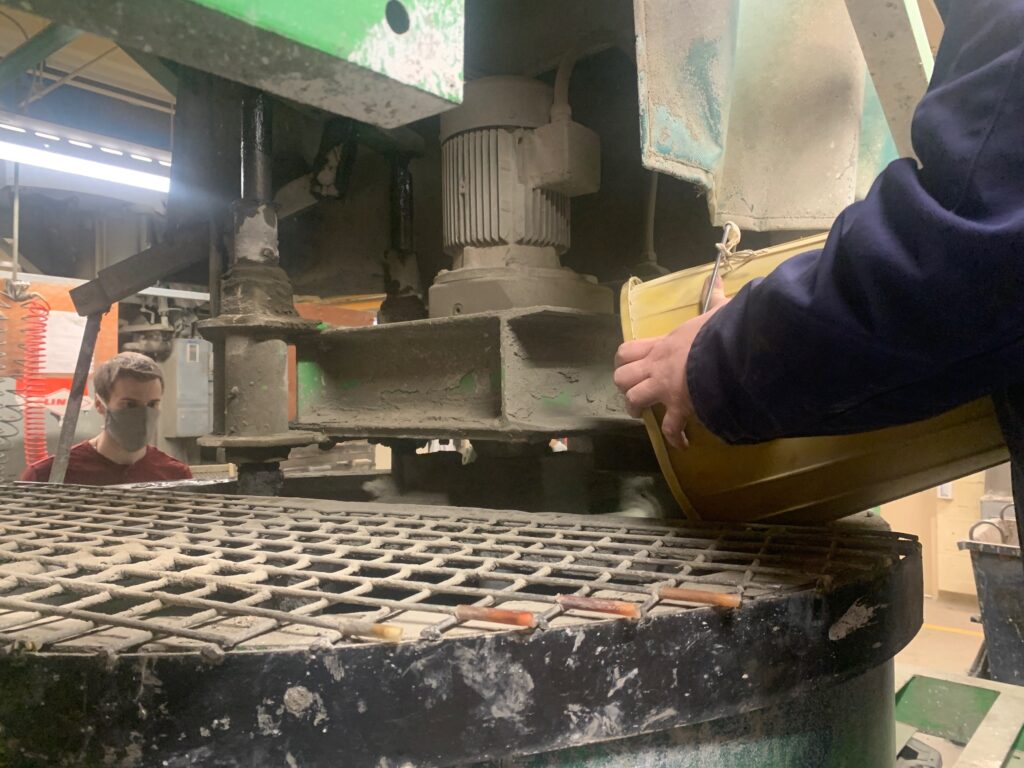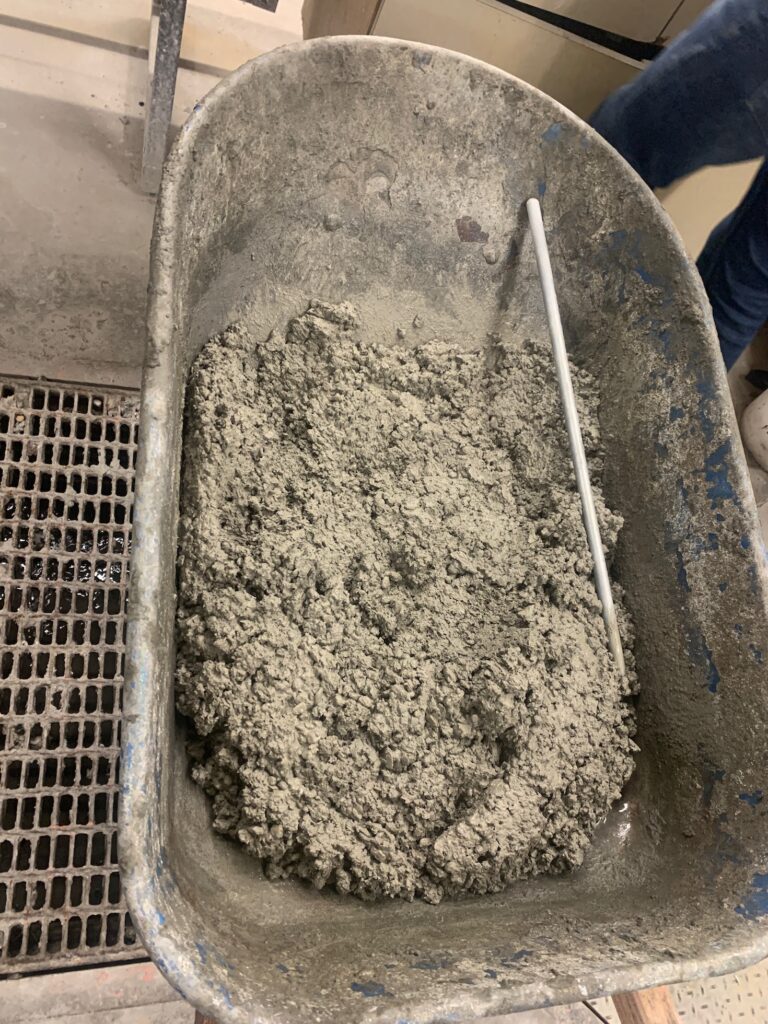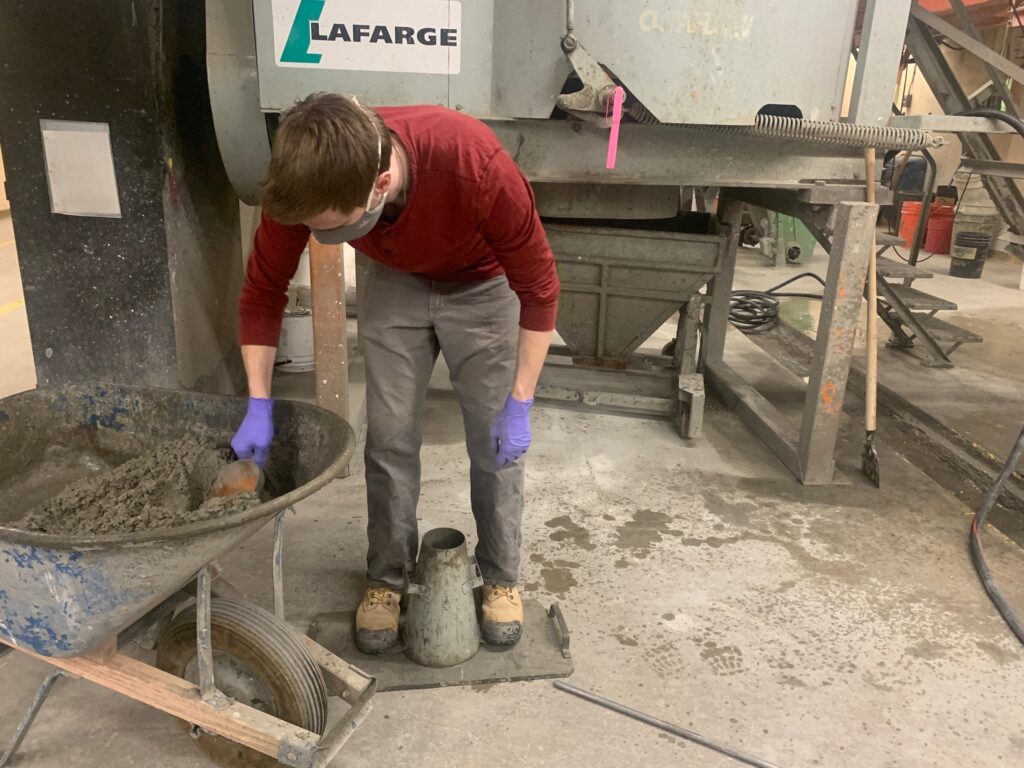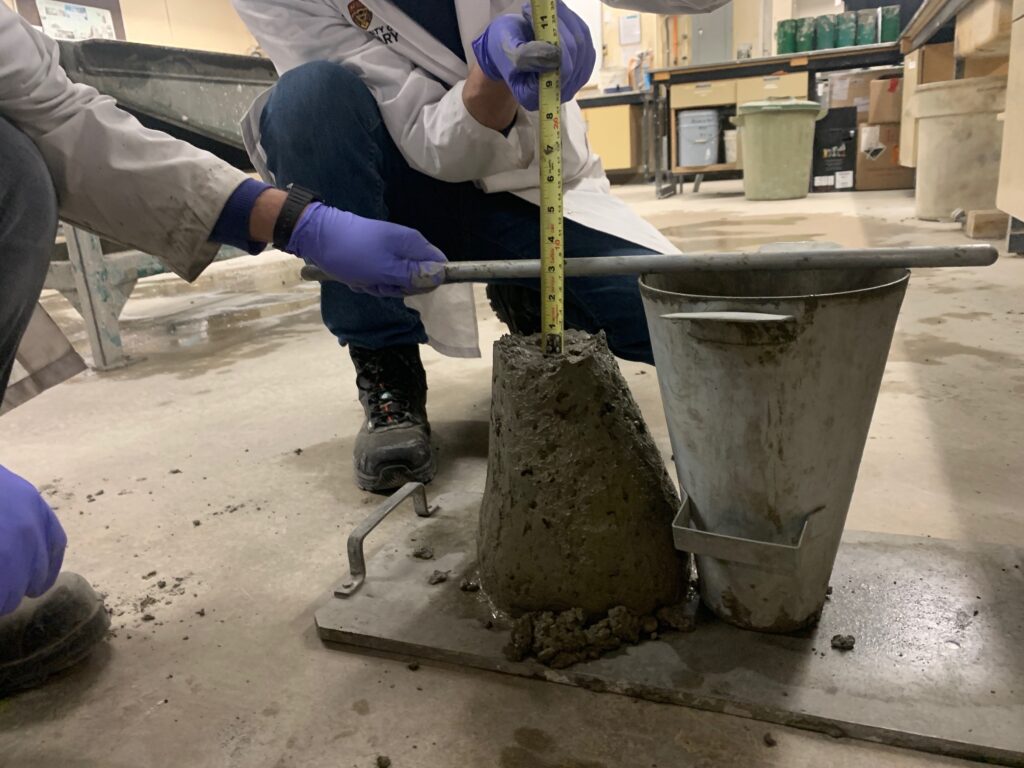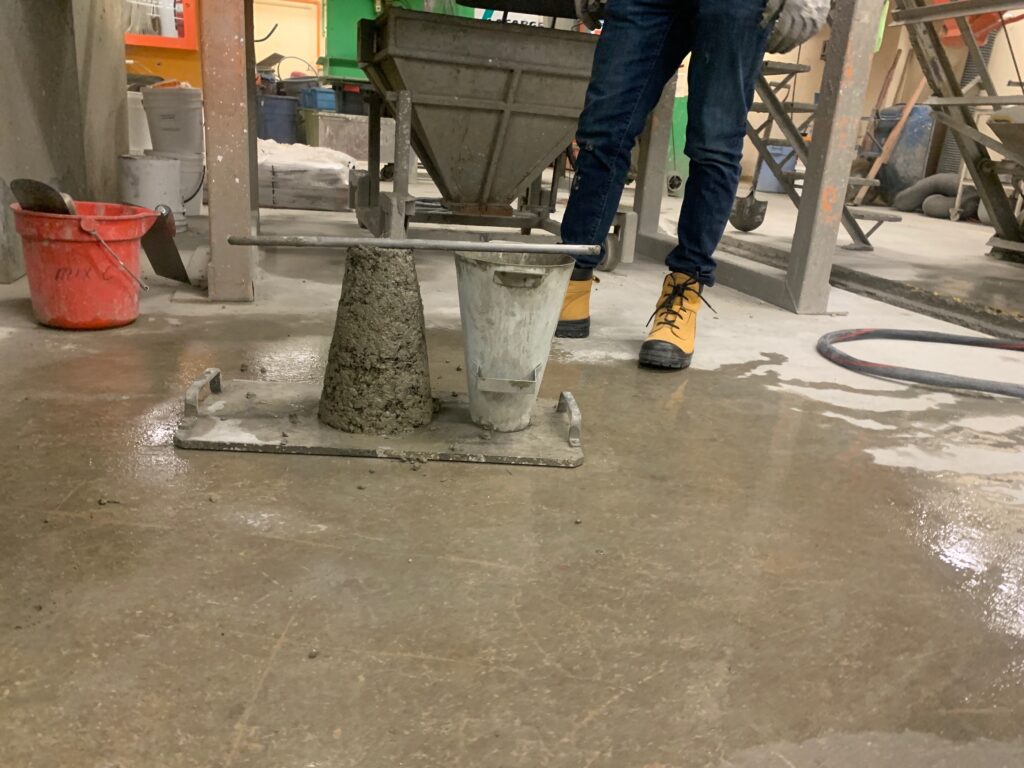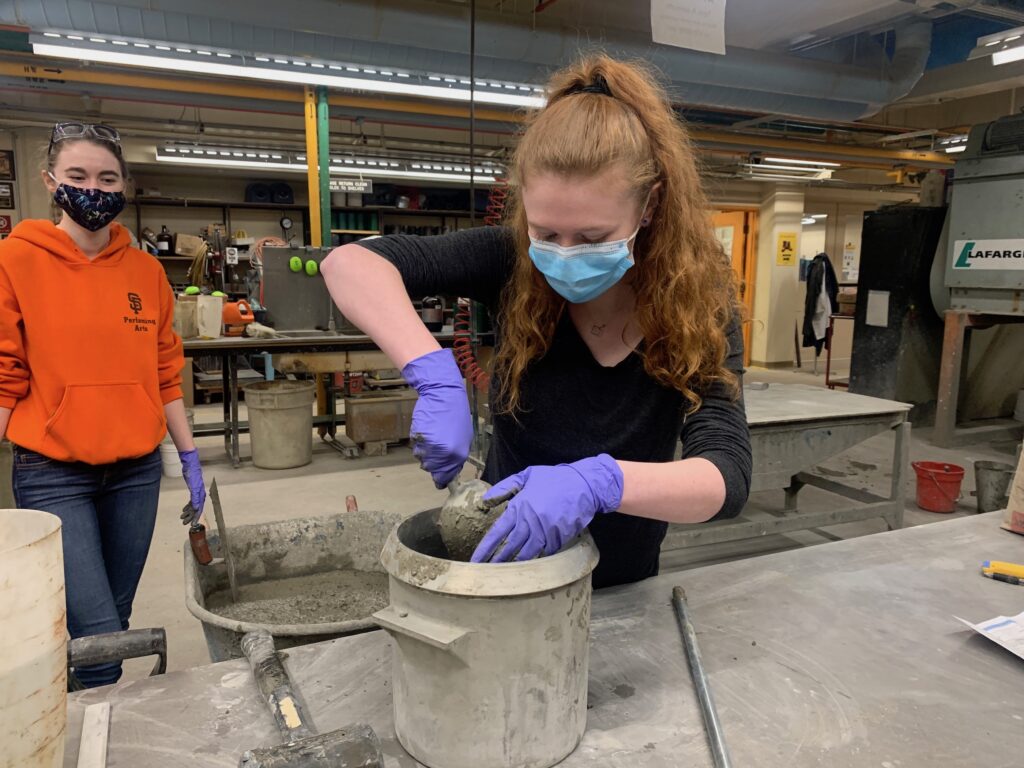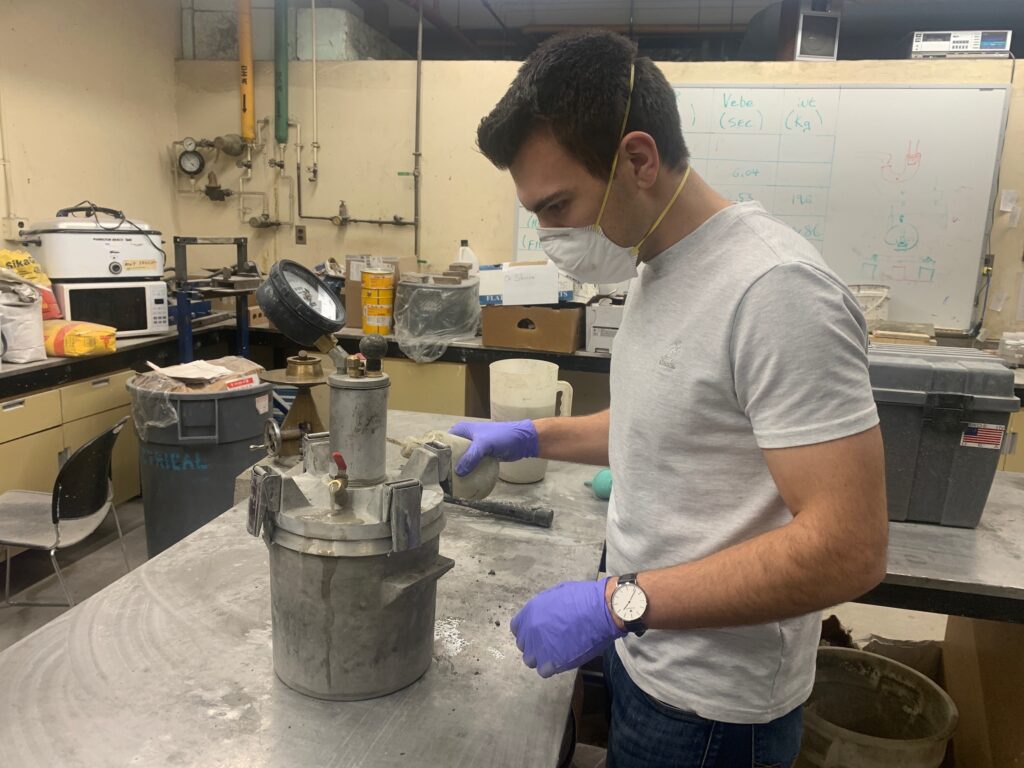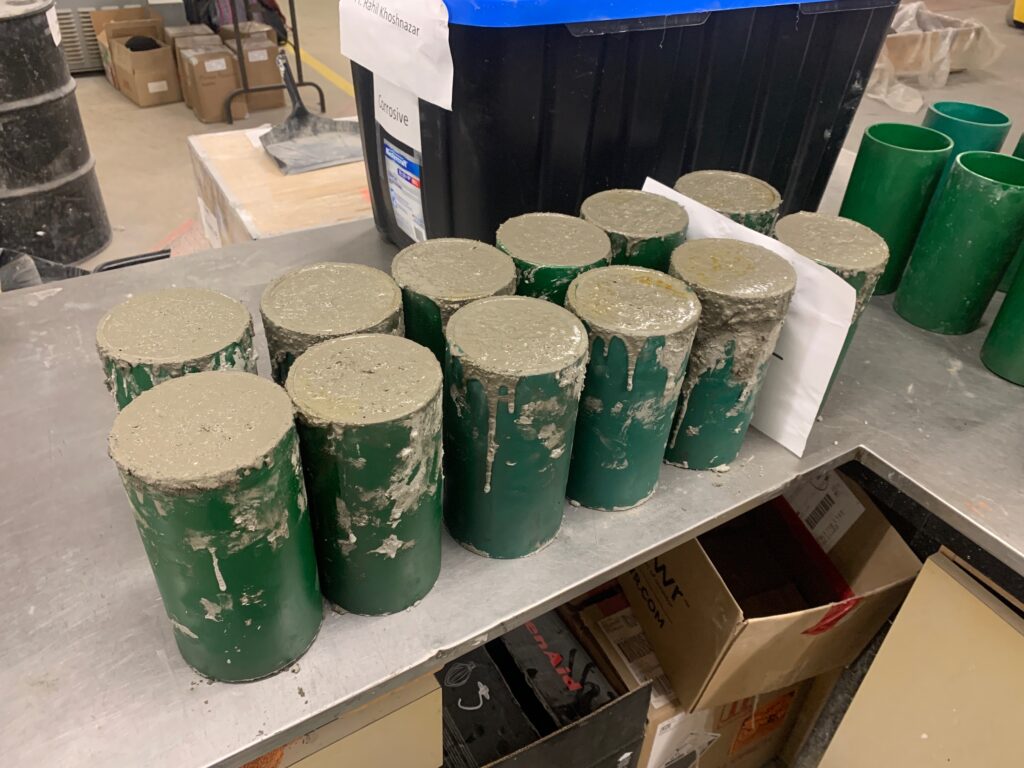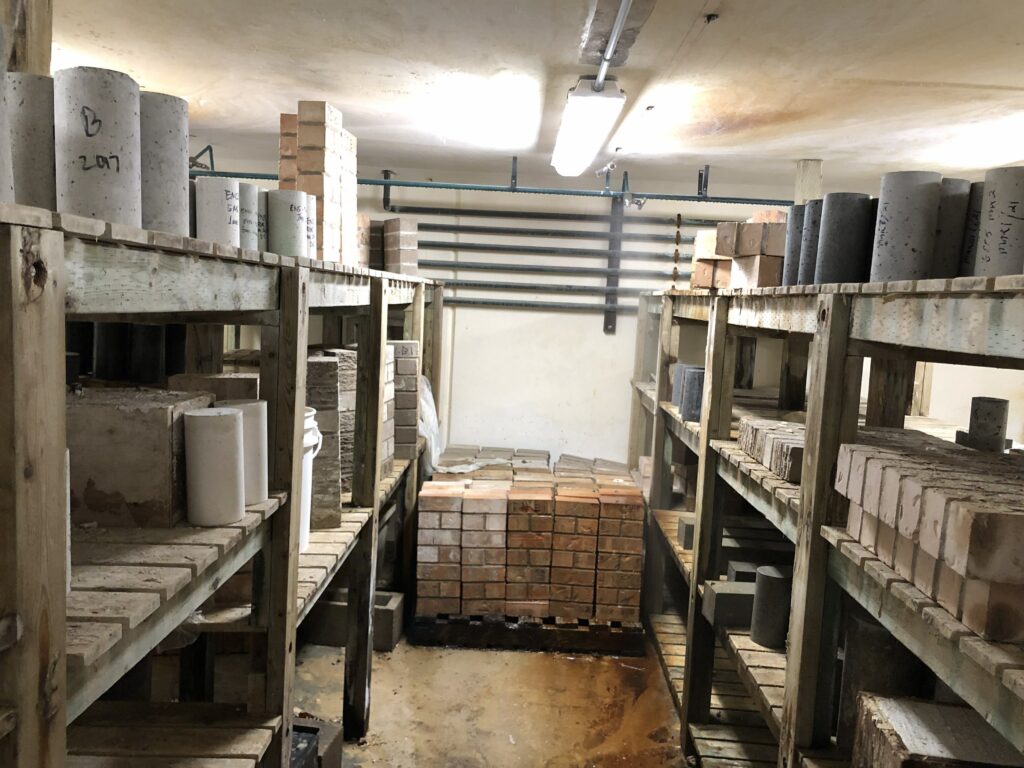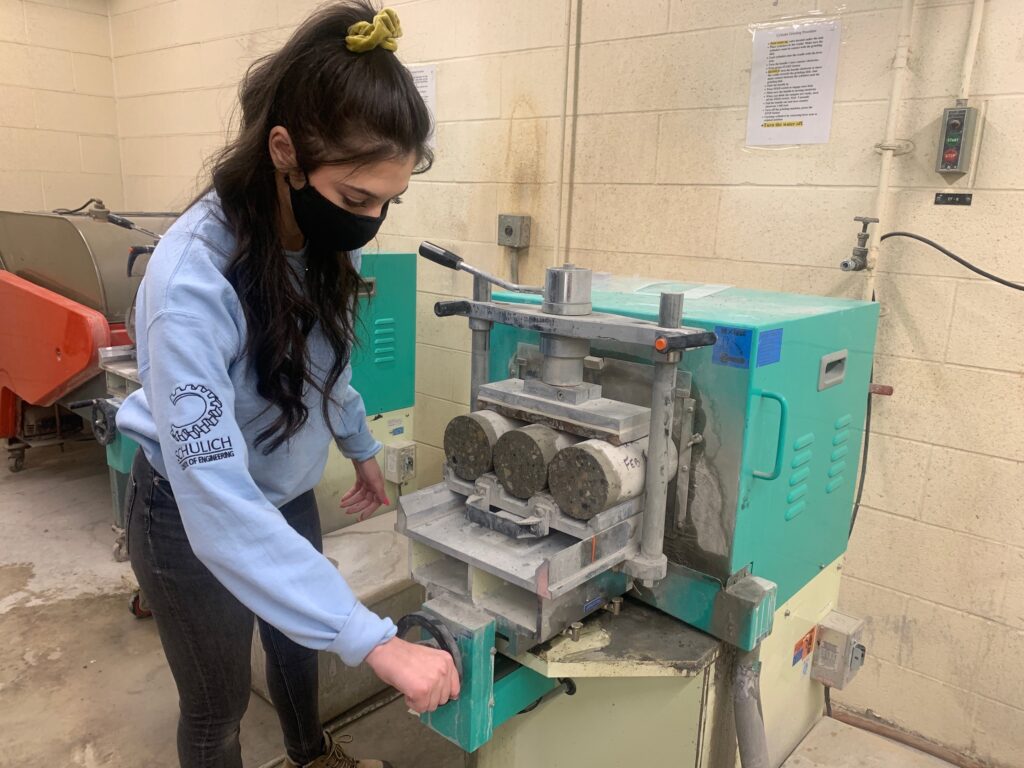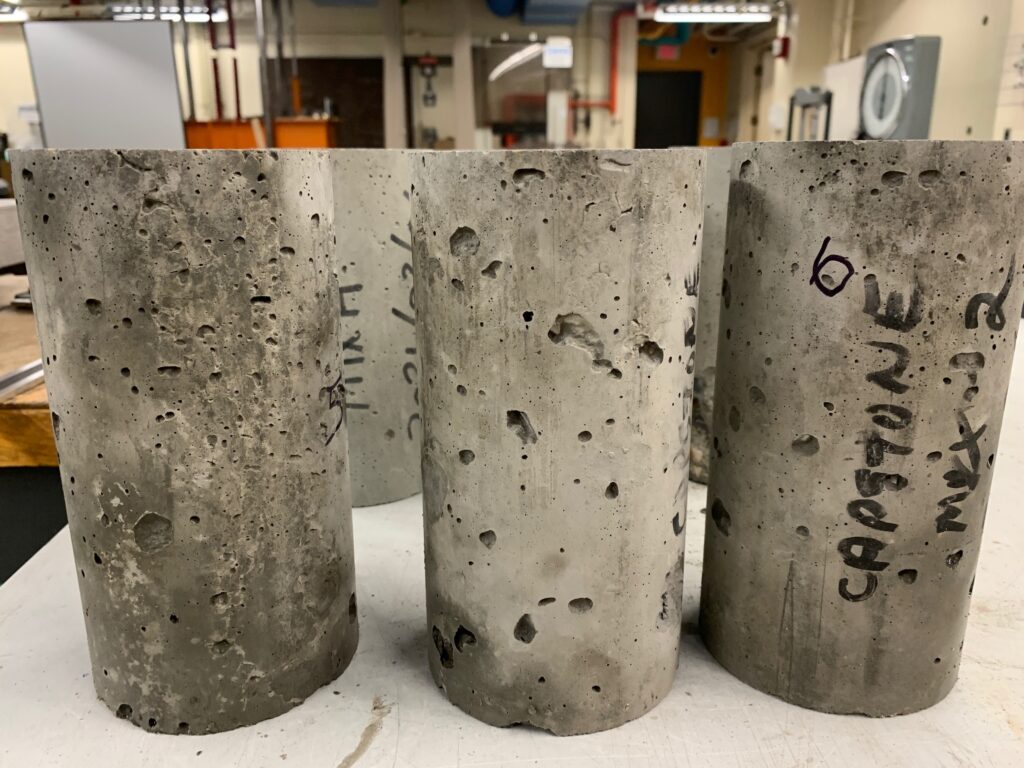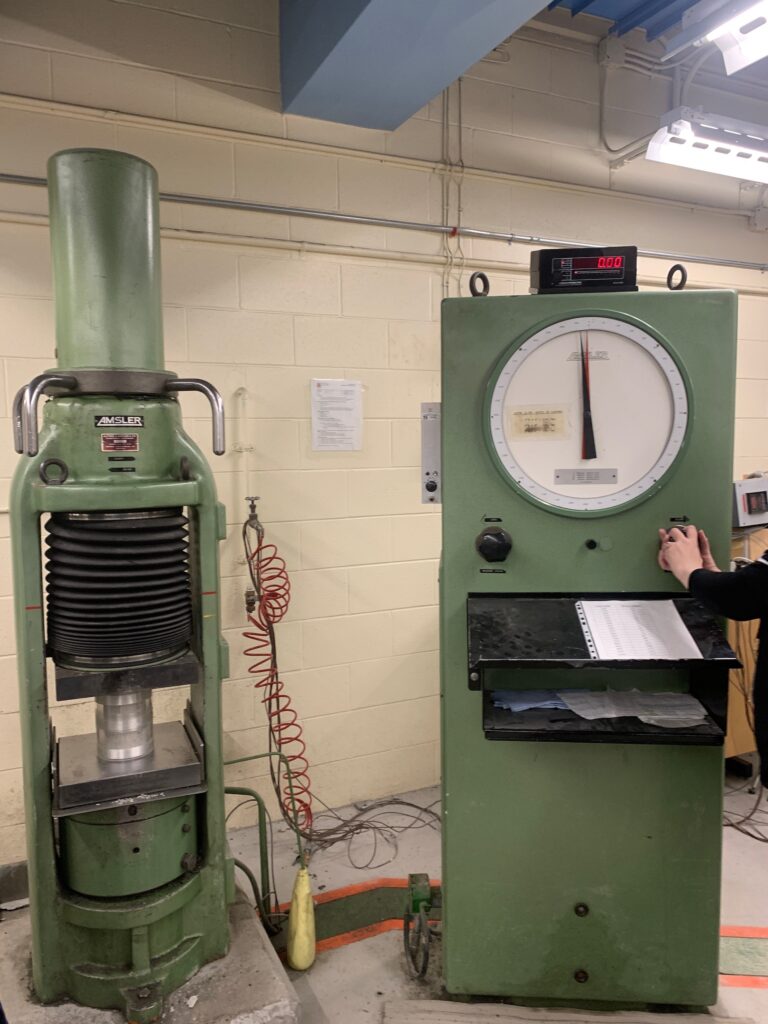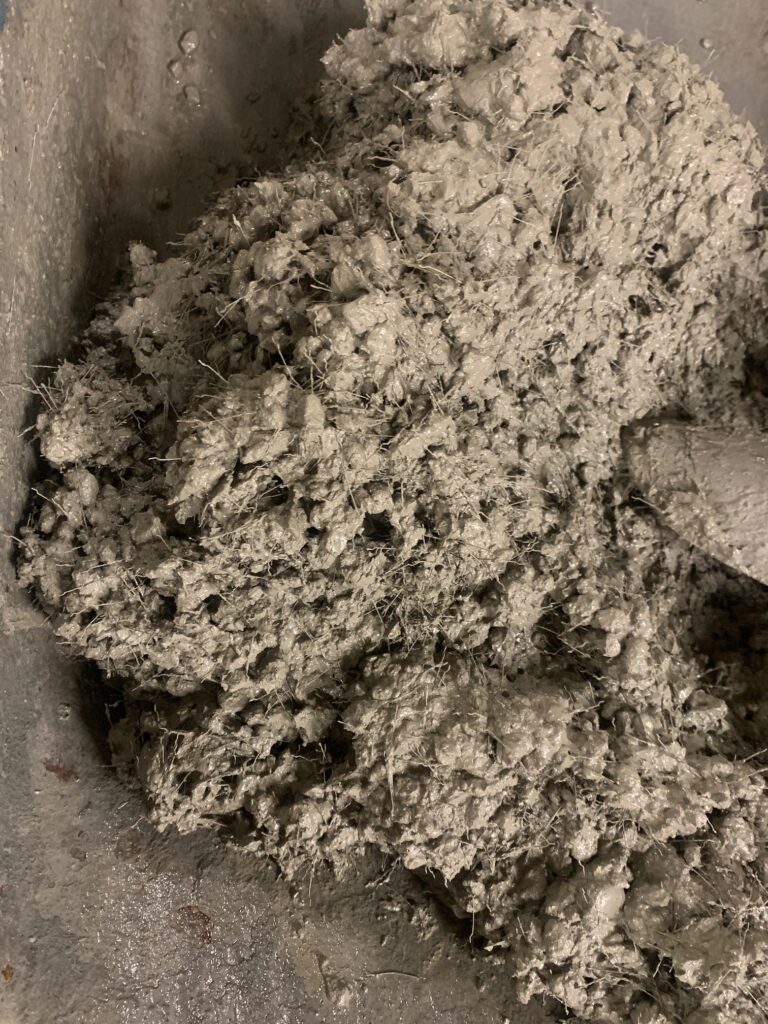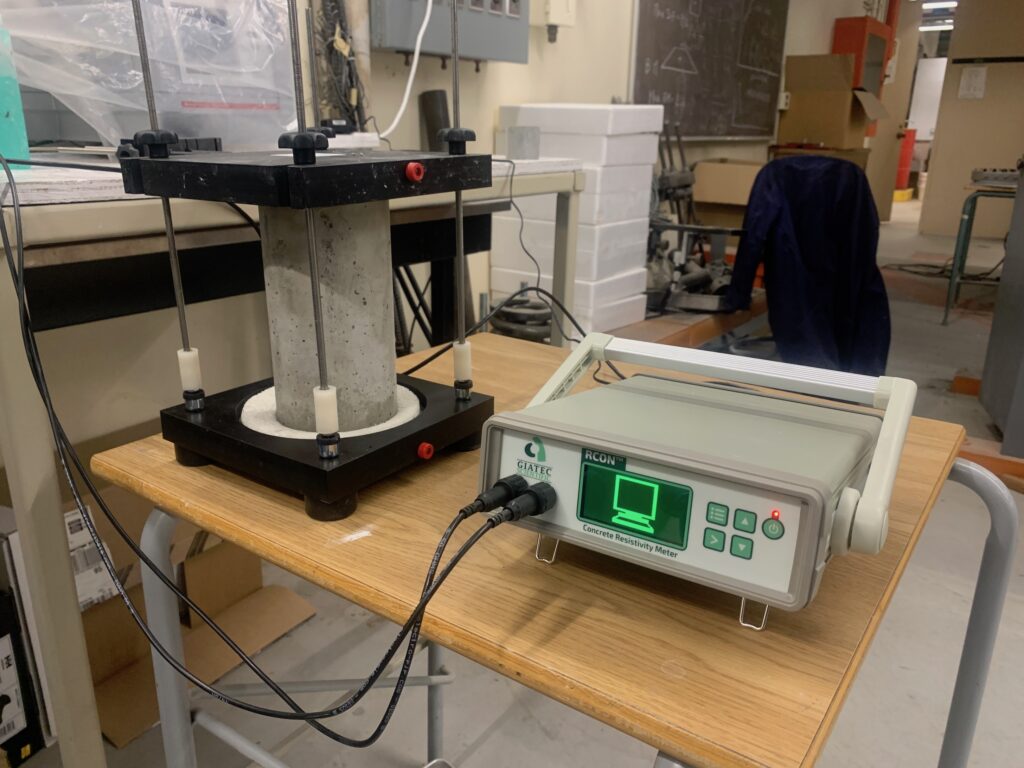Project Category: Civil
Join our presentation
About our project
The University of Calgary’s School of Architecture and the Calgary Downtown Association have partnered together to complete The Green Alley Project. This project aims to transform alleyways in downtown Calgary into more vibrant spaces, while being environmentally friendly, in hopes of encouraging “green mobility” such as walking and biking. The location of interest for this project is provided below.
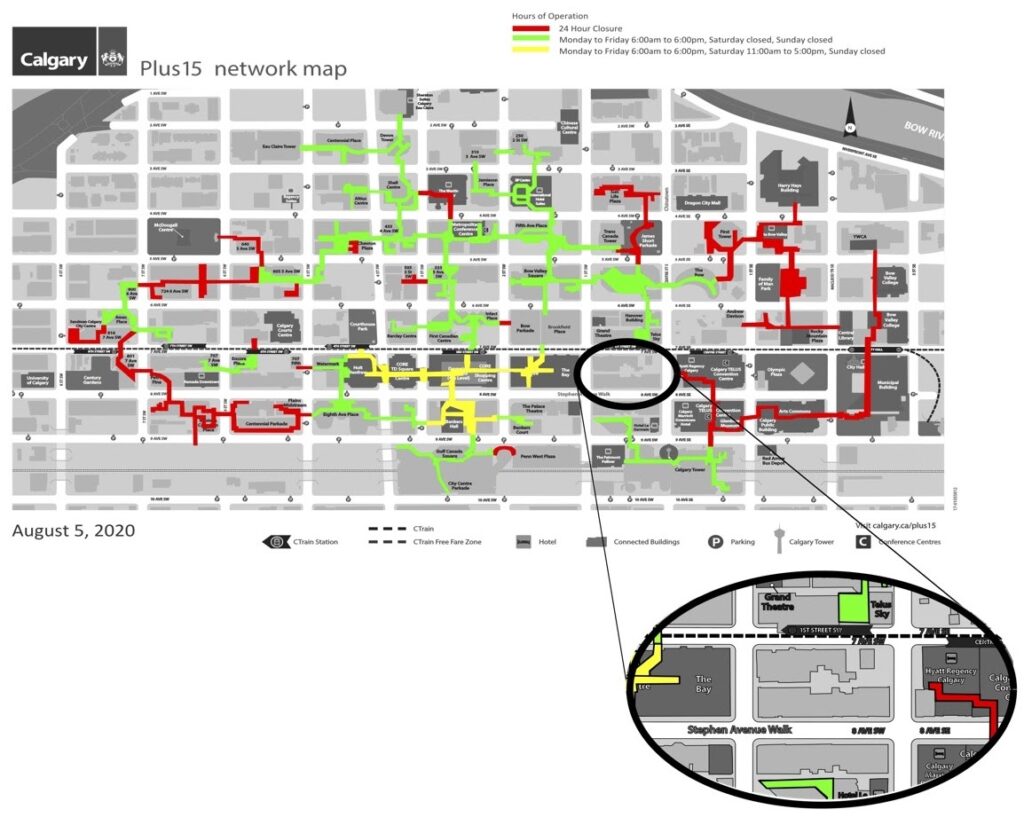
Individual concrete pavers will be used throughout the green infrastructure designs. Examples of what the pavers may look like can be seen below, with planned dimensions of 5x20x20cm.

Due to the nature of the Green Alley Project, it is important to consider and assess the environmental impact of the concrete used for the pavers. The primary goal of this ENCI Materials capstone project is to design an environmentally friendly concrete mix that maintains a standard strength as required by typical specifications. Potential solutions have been examined and tested after a baseline conventional mix was established.
Additionally, it is well known Calgary receives a lot of snow in the winter months. This leads to slippery, icy conditions, which may discourage users from continuing to use green mobility options. To promote the safety of such options in the winter, the feasibility of a self-deicing concrete mix has been considered, with one conductive mix casted and tested.
Several factors must be taken into account when selecting the final concrete mix design. These include, but are not limited to, cost, environmental impact, aesthetics, strength and durability, life cycle, etc. Appropriate analyses have been conducted in order to recommend the most feasible mix design to use for The Green Alley Project.
Ultimately, our final design solution selected for use in The Green Alley Project is a more environmentally friendly mix which incorporates slag cement and fly ash.
Meet our team members
Michael Spronken
Danielle Baker
Anthony Sheveliov
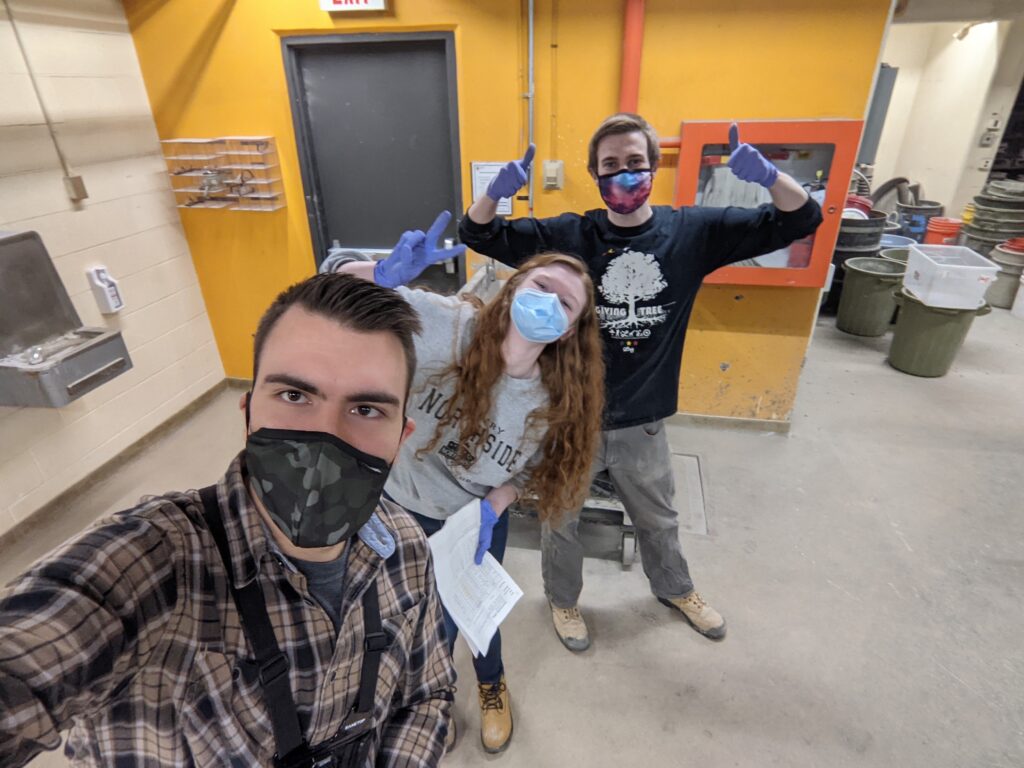

Mira Saba
Marielle Paslawski
Details about our design
HOW OUR DESIGN ADDRESSES PRACTICAL ISSUES
Most of the logistics surrounding practical issues in our project revolve around how effective our material selection is able to improve our concrete design. A practical mix should be sustainable, reliable, and long lasting.
- Chloride penetration from deicing salts scattered on roads and walkways tend to degrade concrete over time. Our design implements ground granulated blast furnace slag cement (slag), Class F fly ash, and a high proportion of cementitious materials to reduce the permeability of the cement and help it last longer.
- For concrete to be environmentally sustainable, it should include materials that are locally sourced and don’t produce a lot of transportation emissions, such as fly ash. Additionally, both fly ash and slag require very little additional energy to produce, which saves time, saves money, and reduces GHG emissions.
- Our concrete also makes good use of chemical admixtures which make the concrete uniform and resistant to cracking from Calgary’s cold weather changes, making it both more reliable and longer lasting.
WHAT MAKES OUR DESIGN INNOVATIVE
- Considering the open-ended nature of this capstone project, we have had the opportunity to explore unique and innovative design solutions. For our final design, we focused on high-volume cement replacement to reduce the environmental impacts of our concrete mix. Specifically, we evaluated the use of fly ash and slag cement as supplementary cementitious materials to replace 55% of the standard cement in our mix.
- Although the use of supplementary cementitious materials is common industry practice, it is unique to replace more than 50% of the standard cement in a concrete mix. In North America, typical replacement quantities range from 15-25% by mass for Class F fly ash, and 25-70% by mass for slag when these materials are used separately.
- We found research in the area of combining two supplementary cementitious materials quite limited, and the research we did find was auspicious. From this, we decided to experiment and observe the results of combining fly ash and slag.
- For our final design, Environmental Mix 3, we replaced 20% of the standard cement with fly ash and 35% of the standard cement with slag (by mass replacement).
WHAT MAKES OUR DESIGN SOLUTION EFFECTIVE
For this project, an effective design solution will be a concrete mix which is usable and meets the required specifications for paver application in Calgary. Additionally, sustainability is the primary focus of our project, and an effective solution should also be environmentally and economically sustainable.
- Due to the nature of Calgary’s environment, the pavers will be subjected to severe freeze-thaw cycles. Air entraining admixture has been incorporated in the design to effectively combat this.
- The slump of our final selected mix design met the target perfectly. This appropriate workability will allow for easy placement and casting of the concrete pavers.
- The strength of our selected design had the highest out of the three environmental mixes designed.
- Our final selected design reduced the greenhouse gas emission by 34.4% when compared to our conventional baseline design using strictly typical concrete components, such as cement, water, and coarse and fine aggregates.
- Our final selected design reduced the embodied energy of the mix by 38.5% when compared to our baseline mix.
- The cost of our final selected design is reduced by approximately 5$ per m3 of concrete when compared to our baseline mix.
HOW WE VALIDATED OUR DESIGN SOLUTION
Many different types of data were collected to evaluate each mix design. Of the data collected, 7 parameters were selected to evaluate each design.
Pairwise comparison was used to identify a concrete mix design for recommendation. Each criteria was given a weight of importance (WOI) to measure how desirable they are in comparison to the others. A high weight of importance corresponds to a criteria of high value. For each mix design, a score is given for each criteria measuring how well that mix meets the target. These scores are multiplied with the WOI and summed for each mix to give a final score. The highest final score indicates the recommended design.
Evaluation criteria:
| __Criteria__ | Definition | __ Target __ |
|---|---|---|
| f’c28 | 28 day compressive strength – Minimum requirement in CSA A23.1 based on exposure class C-2 | ≥ 32 MPa |
| Air | Air content of the mix, includes entrapped and entrained air – Required range in CSA A23.1 based on exposure class – For freeze thaw resistance | 6% – 9% |
| Slump | Measure of the workability of the mix – A high slump is easier to work with but may result in a lower strength – A low slump may cause difficulty during compaction | 75mm |
| Cost | Cost of materials per 1m3 of concrete | Min |
| GHG | Greenhouse Gas emissions for the production of the concrete materials and concrete mix | Min |
| EE | Embodied Energy for the production of the concrete materials and concrete mix | Min |
| ρ28 | Resistivity of the concrete mix at an age of 28 days – Measure of durability in terms of chloride penetration | Max |
Weight of importance (WOI) of each evaluation criteria:
| Criteria | f’c28 | Air | Slump | Cost | GHG | EE | ρ28 |
|---|---|---|---|---|---|---|---|
| WOI | 10 | 6 | 1 | 3 | 7 | 5 | 9 |
Recommended design: Environmental Mix 3 (EM3)
Why this mix is selected:
- This mix design was superior in terms of durability/resistivity at 130Ω・m compared to around 80Ω・m for the other mix designs.
- GHG emissions and EE were among the lowest for this mix. The environmental mix designs were the lowest, all with similar values.
- The workability of this mix is adequate and on target at 75mm.
Areas of improvement:
- The air content is slightly lower than desirable. This parameter can be resolved by increasing the proportion of air entraining agent.
- The 28-day compressive strength is lower than desirable though close to the required minimum: 29.7MPa vs. 32MPa. Reducing the water-to-cementitious-materials ratio and using a larger proportion of superplasticizer is an example of how to increase concrete strength.
FEASIBILITY OF OUR DESIGN SOLUTION
The feasibility of our design was assessed based on the selected materials, material proportions and availability, and cost. Our design solution contains 35% cement replacement with slag and 20% cement replacement with Class F fly ash. Fly ash has become a commonly used ingredient in conventional concrete mixes, however, fly ash is a by-product of burning coal. Slag is a by-product of the iron production used in steelmaking. Unlike the iron production, coal burning power generation will be phased out in the future with the increased use of more environmentally friendly power generation alternatives. Therefore, the use of fly ash will become obsolete. Instead of choosing a mix with solely 50% cement replacement with fly ash, we chose to implement slag with fly ash to slowly usher in the use of slag into current conventional concrete mixes industry practices and simultaneously reduce the industry’s reliance on the use of fly ash.
In terms of availability, a large amount of North America’s fly ash is produced in Canada and the northern region of the United States which means the material is locally available. However, our current supply of slag in the University of Calgary lab comes from Japan, which makes this material less feasible.
The cost of Class F fly ash ($195/tonne) is less than that of Type GUL cement ($260/tonne) with slag as the most expensive ($285/tonne). Thus, fly ash is the most feasible, making the use of slag less attractive. The availability and cost of slag in comparison to cement is another reason why we chose to use a mix of both supplementary cementitious materials, instead of converting solely to slag.
Partners and mentors
We would like to thank the following people for all their help in making our project possible:
- Our academic advisor, Dr. Rahil Khoshnazar, whose concrete design expertise was instrumental in each stage of our project.
- Our industry advisor, Tyler Callaghan, who has provided us with valuable insight regarding Calgary specific concrete production and casted our initial mix designs while COVID prevented our team from casting and testing the mixes ourselves.
- Alireza Haji Hossein, PhD student who voluntarily helped with the casting and testing of each concrete mix and made conductivity testing possible.
- The University of Calgary civil concrete lab technicians, Noha Mohammad and Daniel Larson, whose experience in concrete casting and testing ensured the precision and efficiency of our own concrete casting and testing.
_
Our photo gallery
